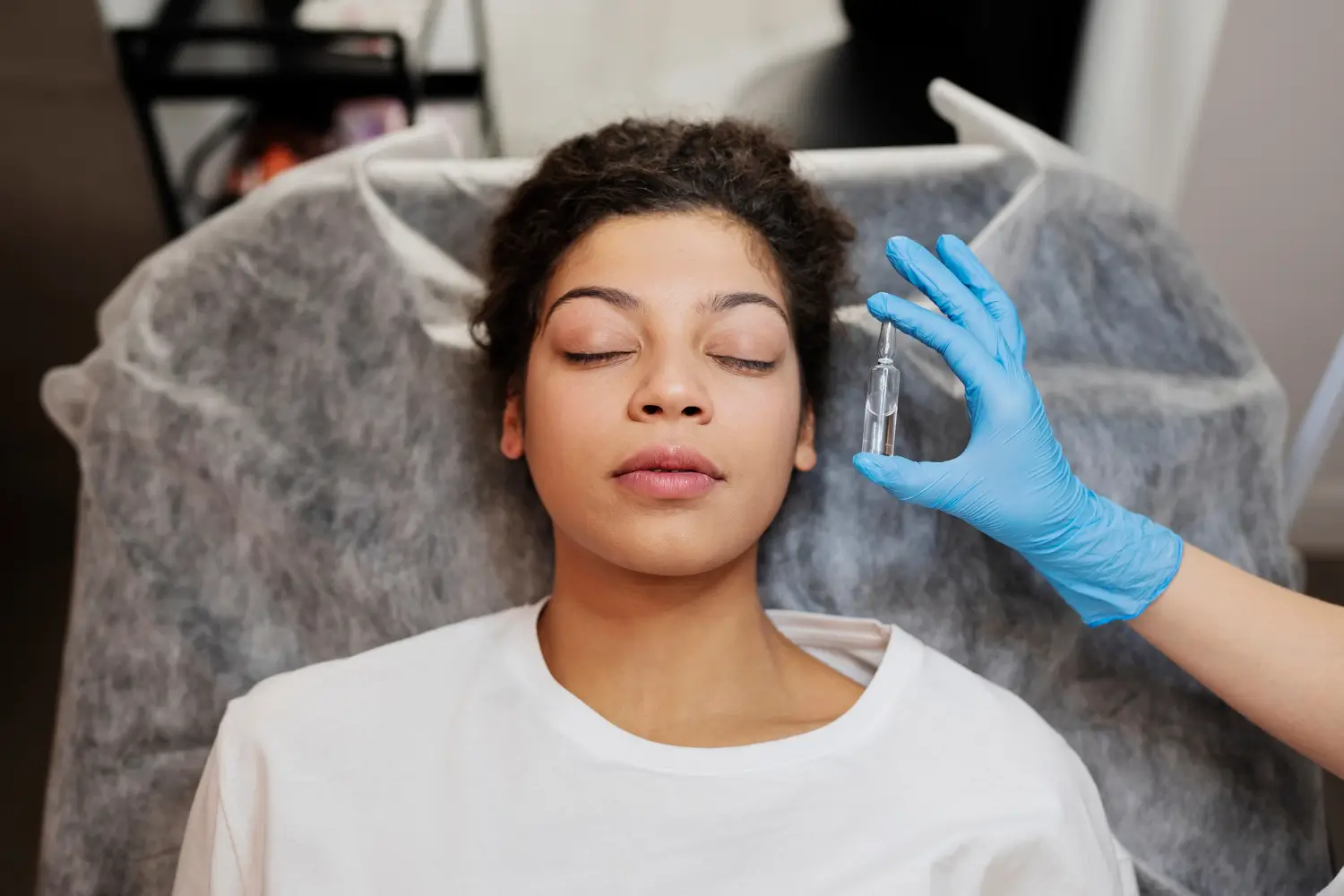
Dermal fillers have gained popularity for their ability to restore facial volume and reduce wrinkles. However, various studies have highlighted that while generally safe, these procedures can lead to complications such as infections and vascular issues.
Powerfill, a newer filler used primarily for body contouring, has potential side effects. Like other fillers, it may cause temporary swelling and bruising at the injection site, but patients occasionally report more lasting lumps or asymmetry. Understanding these risks is critical for patients considering Powerfill treatments.
In this article, we’ll explore the common and rare side effects of Powerfill and provide tips for managing them to ensure the safest experience possible.
Key Takeaways
- Powerfill injections commonly cause temporary side effects at the injection site, such as swelling, bruising, discoloration, and mild irritation. These effects typically resolve within a few days of treatment.
- Rare side effects may include lumps, nodules, uneven results, and, in some cases, allergic reactions. Signs of an allergic reaction could be redness, itching, or difficulty breathing.
- Proper injection technique, thorough aftercare, and patient education are essential to minimize risks. Patients should keep the treated area clean, use ice packs, and avoid pressing on the injection site.
- Patients should be aware of signs of infection or adverse reactions, such as worsening pain or prolonged redness, and seek medical help if these occur.
About: Doctor Medica is your trusted supplier of top-quality dermal fillers, viscosupplements, and more for your medical practice. We offer genuine products from leading brands at the lowest prices in the market. If you’re looking to order Powerfill online for your practice, contact the Doctor Medica team today.
Common Side Effects of Powerfill Treatments

While Powerfill injections are generally considered a safe and effective cosmetic treatment, it’s not uncommon for patients to experience mild side effects following the procedure. These effects are typically localized to the injection site and occur as the body adjusts to the filler.
- Swelling at the Injection Site: This is a normal reaction to the injection and often appears immediately after a Powerfill treatment. It typically subsides within a few days as the body adjusts to the filler.
- Bruising and Discoloration: During the treatment, small blood vessels beneath the skin can be disrupted during the injection. This can result in dark spots or discoloration around the treated area, but these symptoms generally fade within a week or two.
- Redness and Irritation: After getting an injection, the skin may appear red or feel slightly tender for a short time after treatment. These symptoms typically resolve on their own within a few days.
Rare but Serious Side Effects

Although Powerfill is a low-risk filler, it’s important to be aware of rare but serious side effects that can occur in some cases. These effects, while uncommon, may require medical attention and can impact the overall outcome of the treatment.
- Nodules and Lumps: These may feel like firm bumps under the skin and can occur due to localized swelling or an improper injection technique. While they may resolve on their own, persistent nodules might require medical attention or corrective treatment.
- Uneven Results: Uneven results, though rare, can sometimes occur after getting Powerfill injections. This may happen if the filler is not evenly distributed or due to slight natural asymmetry in the face. Touch-up treatments can often address these inconsistencies for a smoother appearance.
- Allergic Reactions: Symptoms may include itching, redness, swelling, or more severe signs like difficulty breathing. If you have a known allergy to any ingredient in Powerfill, it’s essential to avoid the treatment and consult your provider for alternatives.
Managing and Mitigating Risks

Ensuring safe and effective outcomes with Powerfill injections involves careful attention to technique, aftercare, and patient education. Skilled practitioners use precise placement methods and appropriate dosages to achieve natural, balanced outcomes. When comparing cosmetic injections like Powerfill vs Sculptra, both fillers require expertise, but Powerfill’s formulation demands extra care due to its long-lasting effects and collagen-stimulating properties.
Aftercare Recommendations
Following proper aftercare instructions is essential to prevent complications and promote healing. Patients should:
- Avoid touching or massaging the treated area for at least 24 hours.
- Refrain from strenuous activities, including exercise, for the first 48 hours.
- Stay out of direct sunlight and avoid tanning beds to prevent irritation.
- Use cold compresses if swelling occurs, but only as directed by the provider.
- Keep the treated area clean and avoid applying makeup for 24 hours.
Open communication between providers and patients is key to managing expectations and reducing risks. Patients should be fully informed about the procedure and its potential side effects.
Detecting and Treating Complications
Although Powerfill is generally safe, complications can sometimes arise, and early detection is key to minimizing risks. Patients should monitor for signs of infection or adverse reactions, such as prolonged redness, swelling, warmth, or pain around the injection site. In some cases, persistent lumps, severe bruising, or allergic reactions like hives, itching, or difficulty breathing may indicate more serious issues that require immediate attention.
If any unusual symptoms occur, seeking medical advice promptly is essential. A qualified medical professional can assess the situation and recommend the appropriate course of action. It’s always better to err on the side of caution—delaying treatment may worsen the problem or lead to more complex interventions.
Treatment options depend on the type of complication. Common solutions include:
- Antibiotics: To address infections at the injection site.
- Antihistamines or Corticosteroids: For managing allergic reactions.
- Dissolving Agents: For reducing persistent lumps or uneven filler placement.
- Follow-Up Procedures: To correct uneven results or address aesthetic concerns.
By recognizing symptoms early and consulting a professional, patients can effectively manage complications, ensuring a smoother recovery and optimal results.
Conclusion
Powerfill is widely regarded as a safe and effective treatment. Common side effects typically resolve on their own within a few days. More serious complications, such as lumps or allergic reactions, may occur in rare instances. It is essential to seek medical attention promptly if any unusual or severe symptoms develop.
As with any cosmetic procedure, consulting a qualified healthcare provider beforehand is crucial to ensuring a safe and satisfactory outcome. By understanding potential risks and adhering to recommended aftercare, patients can enjoy a smooth and successful experience with Powerfill.
FAQs
1. What are the most Powerfill side effects?
The most common side effects include swelling, redness, bruising, and mild irritation at the injection site. These usually subside within a few days of treatment.
2. Can Powerfill cause allergic reactions?
Although rare, allergic reactions can occur. Symptoms may include itching, redness, or more severe signs like difficulty breathing. Patients with known allergies to the ingredients in Powerfill should consult their doctor before treatment.
3. How long does it take for Powerfill side effects to resolve?
Most mild side effects, such as swelling or bruising, resolve within a few days. Rare side effects, like lumps or uneven results, may require additional treatments to correct.
References
Kyriazidis I, Spyropoulou GA, Zambacos G, et al. Adverse Events Associated with Hyaluronic Acid Filler Injection for Non-surgical Facial Aesthetics: A Systematic Review of High Level of Evidence Studies. Aesthetic Plastic Surgery. 2023;48(4):719-741. doi:10.1007/s00266-023-03465-1
Lin JY, Lin CY. Injectable Poly-D, L-lactic acid in facial rejuvenation: three case reports. Published 2020. https://www.semanticscholar.org/paper/Injectable-Poly-D%2C-L-lactic-Acid-in-Facial-Three-Lin-Lin/54e776bbdcf0d12e70274ed0d26fe01a7af01e98
Related Articles
Joanna Carr
Synvisc – What Is It Made Of?
Synvisc is a viscosupplement designed to treat knee osteoarthritis by mimicking the natural fluid in the joint, providing lubrication and cushioning t...
Joanna Carr
Benefits of Filorga’s Top Products for a Youthful Appearance
Discover the youthful benefits of Filorga's top products at Doctor Medica. Achieve a radiant and rejuvenated appearance today.
Joanna Carr
Mounjaro Benefits Listed
Discover the key benefits of Mounjaro (tirzepatide), including its impact on blood sugar control, weight loss, and metabolic health.


